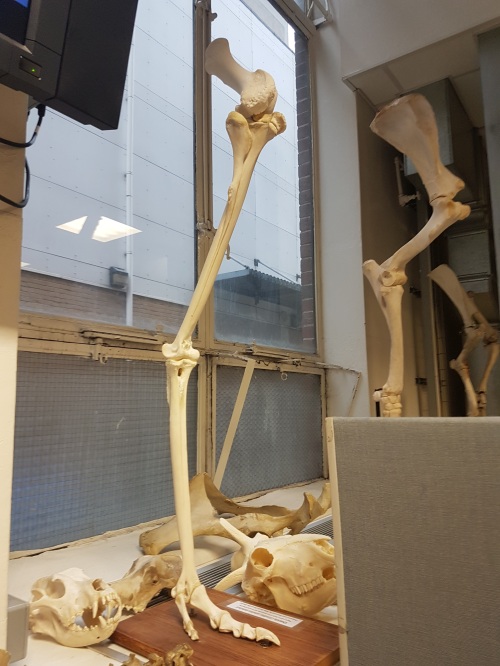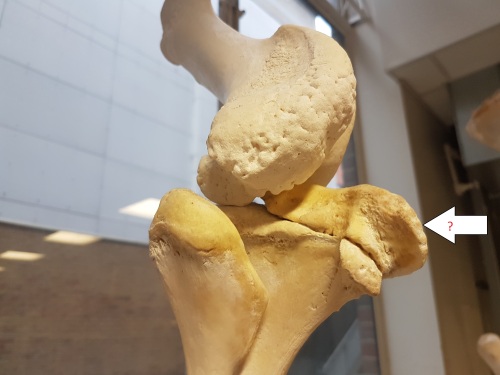An epiphysean Sispyhean task today: solve this mystery that has been bothering me for >15 years. It’s about bird knees. Read on.
Stomach-Churning Rating: 1/10- bones and brief words. Nothing to worry about.
Here is an ostrich. I was interviewing undergrads the other day and looked up to see it, then thought something like: “Oh yeah, that little bit of bone really bothers me. I cannot figure it out.” What little bit of bone?
This little bit of bone. Zooming in on that ostrich’s knee:
The little bit of bone is not talked about much in the scientific literature on bird knees. But we know it’s there and it is part of the composite bone called the tibiotarsus (ancestral tibia, this bit of bone, and the proximal tarsal [ankle] bones on the other end; the astragalus and calcaneum of earlier dinosaurs).
What is it? We call it something like the proximal tibial epiphysis (PTE for short, here). An epiphysis is an end of a bone that fuses up with the shaft during growth, around the time of skeletal maturity; ultimately ending longitudinal (length-wise) growth of that bone. Mammals almost ubiquitously have them. So do lizards and tuataras. And some fossil relatives. Not much else– except birds, in this particular region (the two ends of the tibiotarsus; also in the foot region; the tarsometatarsus; which also has its share of mysteries such as the hypotarsus; I won’t go there today). You can see the PTE in mostly cartilaginous form if you take apart a chicken drumstick.
This PTE, like other well-behaving epiphyses, fuses with the tibiotarsus in mature birds, forming one bone. But the young ostrich’s knee above shows the PTE nicely; and other living birds show more or less the same thing.
It begs for explanations. I’ve talked about it in a few of my papers. But I’ve always punted on what it really means– does it have anything to do with the patella (they appear at similar times in evolution; we know that much, roughly)? Where does it come from, developmentally? (we sort of know that but more work is needed in different species and in high resolution) When did it evolve? What does it tell us? Why is it there in living birds and almost no other extinct birds/other dinosaurs? Does it have anything to do with why birds, during their evolution, seem to gradually increase the fusion of skeletal elements or ossify new ones (tendons, kneecaps, etc)? Why here and not in the femur or several other long bones of birds? How much do these PTEs vary between (or within) bird species?
This is the challenge in the post’s title. I present to you: solve this puzzle. Developmentally, biomechanically, evolutionarily, genetically, whatever– why does this PTE happen? There are hints– e.g. this paper proposes why growth rates of long bones favour the formation of “secondary centres of ossification” like this. But I’m unable to satisfy myself with any solutions I can find. Maybe you can complete The Bird Knee Challenge?
Have a go at it in the Comments below! There are plenty of papers or even a grant or something involved in sorting out this single mystery; one of the many basic mysteries about animal anatomy.

